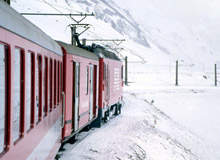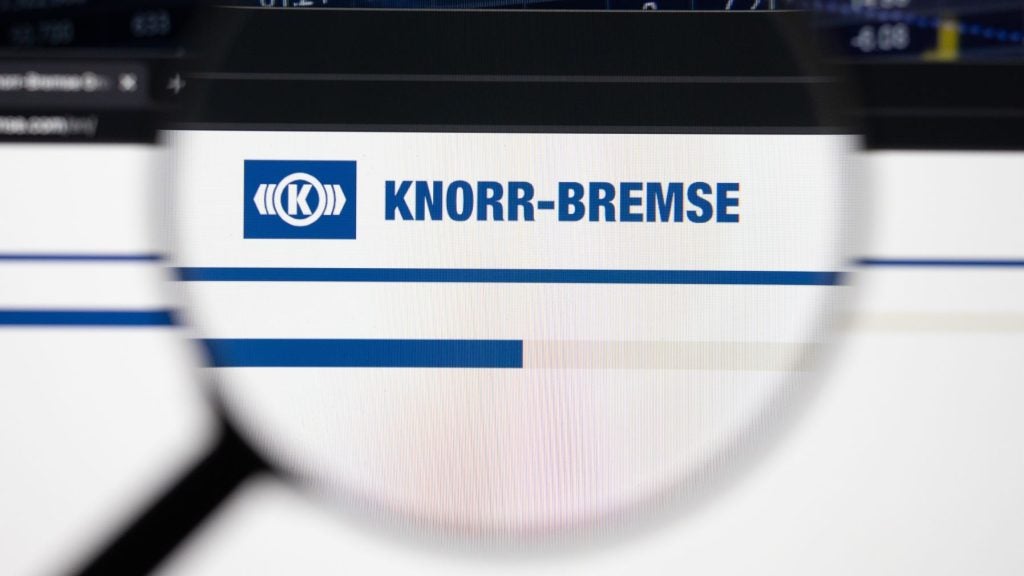
Keeping rail services running at winter can be costly for rail operators and controversial when it is the public purse strings being pulled to ensure the ongoing operation of services. Services can be disrupted, and in places like the UK and the Netherlands, some resources required for the ongoing operation of trains during winter can hinder their running during the warmer months.
But with the big chill now upon most European countries that need to tackle snow on tracks and other heat-related issues, the UK especially can offer some serious lessons on the positives and negatives of running rail during the winter months.
It is not only the UK that suffers during winter. In the well-equipped Canada, where the winters are much harsher, rail has had to fight its own uphill battles. In the spring of 2007, Canadian rail giants Canadian Pacific and Canadian National both reported that operations – and their profitability – had taken a knock through the severity of conditions in the year’s first quarter. Tracks blocked by avalanches and longer journey times delayed shipments on their predominantly
freight services.
On the other side of the world, the Qinghai-Tibet Railway (the world’s highest railway, where temperatures of as little as -45°C can occur), the challenge of keeping a check on 550km of permafrost exists. Rising temperatures could cause track bed stability problems, an odd reversal from extreme cold bringing the problems to the railway operator.
But in the UK, while conditions are less extreme, the issues around running services can be even more controversial, due to the expensive and frequently wasteful dedication of equipment that often lies unused in the sidings for the winter. A snow blower capable of handling 3m drifts bought by the former Network Southeast, for example, saw no mainline action in over a decade and was eventually moved to Scotland.
Point-heaters are another case in point; they are not economically justified when they exist across a network like the UK’s with about 24,000 sets of points which only see winter for about three months of the year. Although widely fitted, a failed single point heater in a key location can cause mass disruption in suburban rush hours.
How well do you really know your competitors?
Access the most comprehensive Company Profiles on the market, powered by GlobalData. Save hours of research. Gain competitive edge.

Thank you!
Your download email will arrive shortly
Not ready to buy yet? Download a free sample
We are confident about the unique quality of our Company Profiles. However, we want you to make the most beneficial decision for your business, so we offer a free sample that you can download by submitting the below form
By GlobalDataA further problem is the lineside snow fences usually found in countries like Japan and Canada, along with shelters that prevent drifting in exposed areas. These have also fallen into disrepair in the UK, as labour costs increase and the frequency of winter extremes declines.
A TYPICAL BRITISH WINTER?
Over the years, the UK has been learning to adapt, especially when it comes to keeping services running. Overnight ‘ghost trains’ have been used to create regular passage on tracks and have become one of the most effective ways of keeping tracks clear and functioning in time for the morning services and the temperature rise that daylight usually brings.
This helps reduce problems resulting from icing, coupling and uncoupling and while keeping trains heated overnight is costly, they
are more likely to be trouble free as well as welcoming for passengers in the early morning.
UK infrastructure operator Network Rail (NR) also has a range of measures to implement if the statistically unlikely does occur. For countries like the UK or the Netherlands, extreme conditions with the potential to cause serious operational problems are unlikely to occur often, and more importantly, not likely to last for very long. However, even over a short period of time, these weather conditions can create havoc.
The 1947 and 1962/3 winters are rare exceptions. From January to mid-March in 1947, snowfall was recorded every day somewhere in the UK, and with temperatures rarely above freezing point the snow kept accumulating. Not as snowy, but even colder, the long winter of 1962/3 also created travel chaos. Although a train becoming buried by snow in Scotland made the headlines in 1978, it was a short-lived extreme in an otherwise not especially challenging winter.
The UK has been plagued with what has now been labelled the ‘wrong kind of snow’. Not originally uttered in that form, the words were attributed as the official explanation for service chaos and withdrawal of many multiple-unit trains from service in early 1991 by British Rail (the then national infrastructure and train operator). Genuinely unusual conditions of extremely fine snow being ingested caused widespread short-circuits, component failure and jammed sliding doors.
Nevertheless, ‘the wrong kind of snow’, often modified to suit the occasion, has become a verbal stick with which to beat any perceived public service failure.
COMMUNICATION AND STAFF TRAINING
Northern Ireland has learnt that the key to success during winter lies in keeping the public informed. Though the country is not especially noted for its winter extremes, Translink still informs customers that delays may occur and explains the measures undertaken to keep things running.
The service has also trained its staff in defensive driving techniques, which can be as relevant to maintaining traction and safe braking over icy rails as they can be to driving across leaf mulch, a particular problem for Northern Ireland Railways. Its Class 450 units are also equipped with sanders, with the more modern CAF-built C3K units with sophisticated anti-slip equipment. Unlike a blanket approach, point heaters are deployed in locations where low temperatures are most likely to
occur.
The UK has also learnt of the benefit of communication and just as with the leaf-fall season that precedes winter, round-the-clock meteorological information is available to help target resources to the worst likely trouble spots.
Helicopters equipped with thermal imaging can be used for identifying areas of extreme cold. Trains are also not allowed to run without ploughs if snow depth exceeds 300mm (12in).
Beihack-type fitted onto locomotives or former loco bogies can cope with snow up to 1.8m deep, with propelled independent drift ploughs used for heavier accumulations. For conditions much more likely to be encountered, locomotives and multiple units are fitted with mini snowploughs to cope with small snowfalls.
But the simple acts of boarding and alighting in icy weather can still be hazardous if stairways and platforms are not kept clear. This usually involves low-tech but effective manual labour and the application of grit and salt to reduce slipping.
A paradox of UK rail services is that the worst winter disruptions often occur in a warmer part of the country, south-east England, giving yet another reason to keep passengers informed. This part of the country has the greatest concentration of tracks and a profusion of pointwork. Frozen points may lock trains into a particular section, thereby rendering the timetable meaningless.
The intensity of services also means that the knock-on effect inconveniences many more passengers than it would elsewhere on the system. Adding to the south-east’s winter woes is the extensive third-rail electrification system in the former British Rail Southern Region, which is prone to conductor rails icing, creating an insulator that prevents picking up of the traction current.
This is a problem shared by Merseyrail and London Underground’s extensive above-ground routes. Dedicated de-icing vehicles are deployed to break up ice on conductor rails and anti-icing sprays can be applied, but these can still lead to problems with track circuiting. In 1991 these problems were ironically made worse by British Rail when it attempted to stick to the full timetable, with isolated problems creating backlogs that took a long time to disentangle.
One of the main lessons learnt was that some service is better than no service; hence emergency timetables are implemented by train operators should the winter start to get out of control.
Countries like Norway, Canada or Russia are obviously more likely to be better equipped for what are, for them, both normal and unarguably essential measures for services to continue during winter. After a spate of problems, the Swiss fitted intake filters to keep out powder snow from sensitive electrical components from the 1950s onwards, for example.
In these countries motive power and rolling stock are built according to conditions they are likely to encounter, as opposed to a financially punitive approach of assuming that anything can happen climatically. But even with foreknowledge, problems still arise, as with the MaK type Di6 for Norwegian State Railways. A catalogue of problems, many associated with an inability to cope with working life in the far north, led to their expulsion for complete rebuild by Siemens for use in the hire
fleet in less extreme conditions.
Despite all this, railways are usually the most reliable form of land transport when winter gets serious. They can cope with ice-coated rails and can run at high speed in visibility conditions that road traffic could not safely handle. Knowing where problems might lie and the most cost-efficient ways to deal with these will only make services better and more reliable during winter months.







